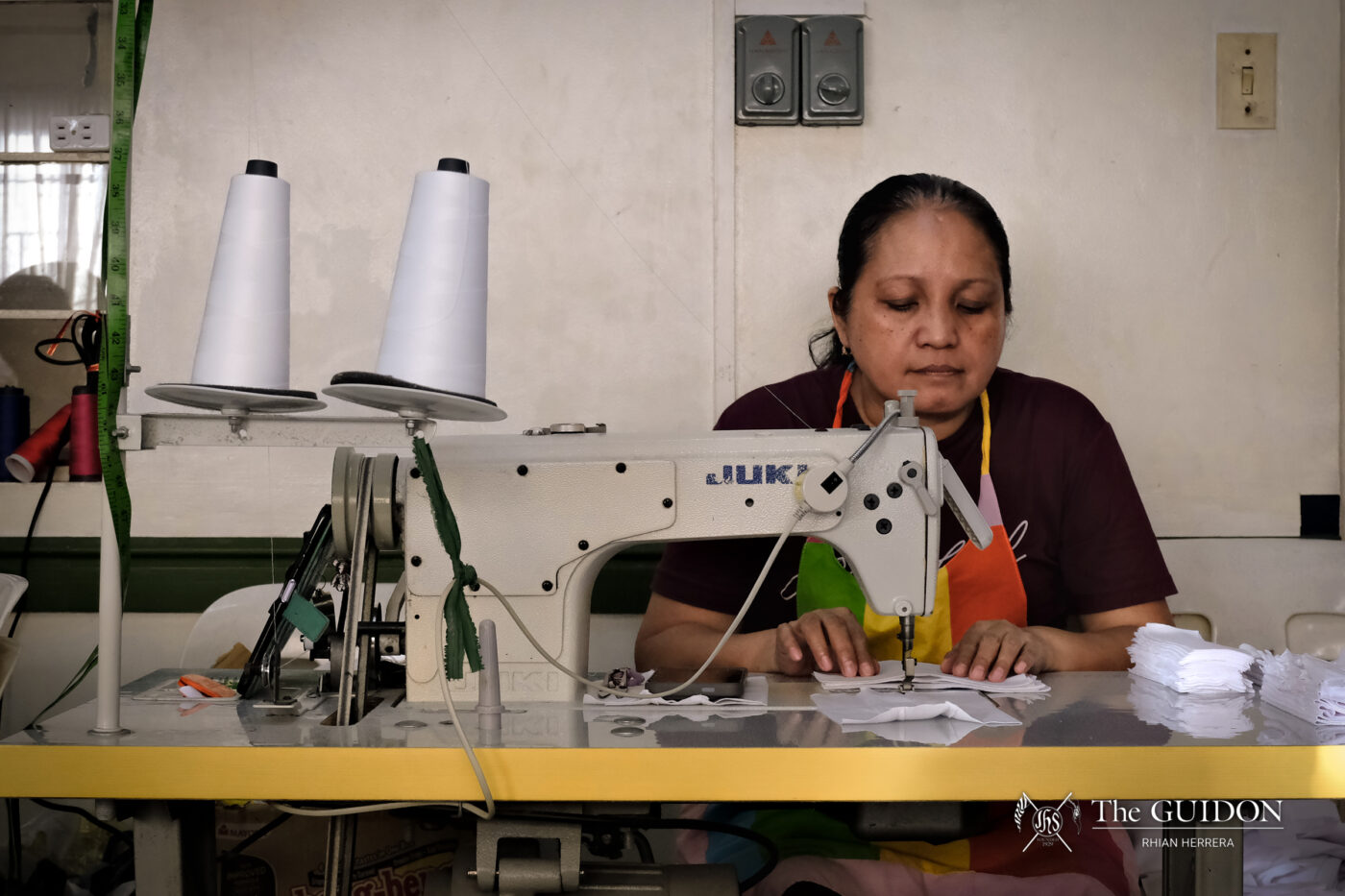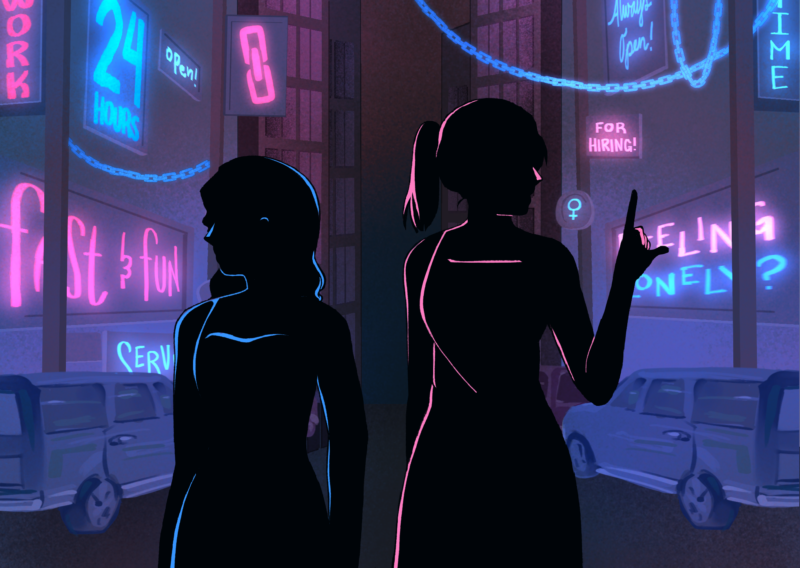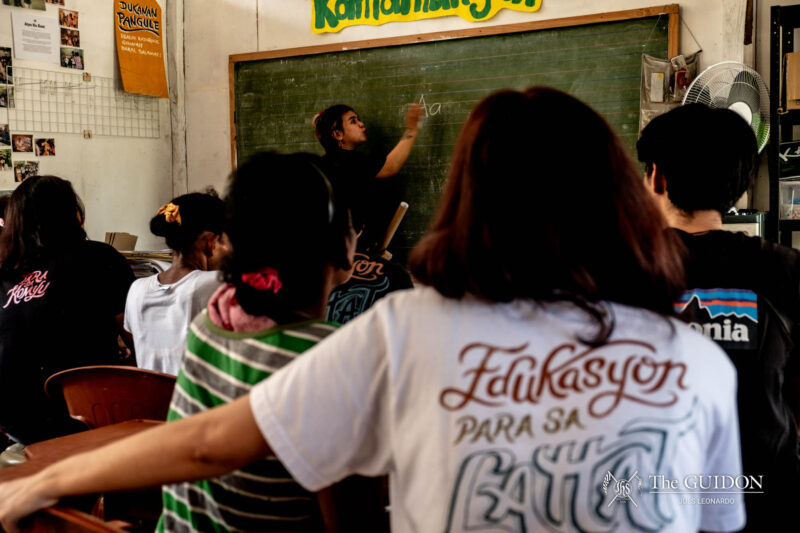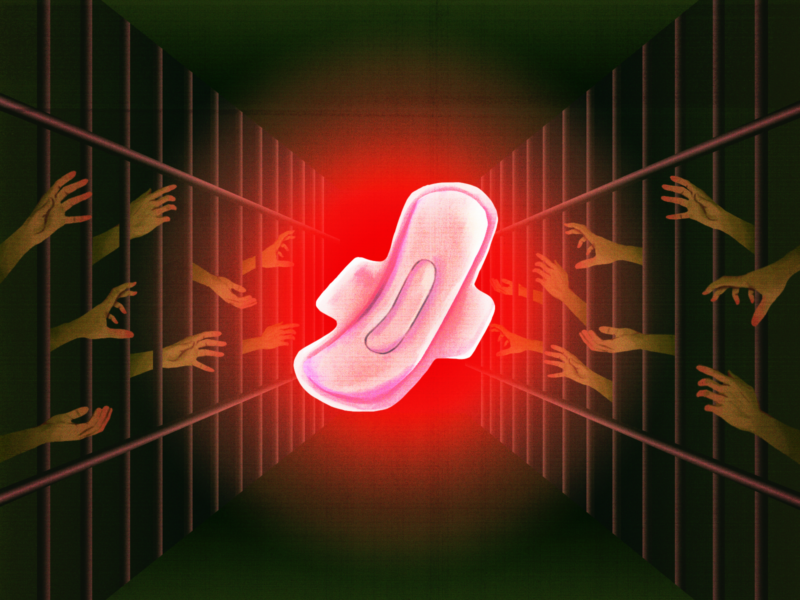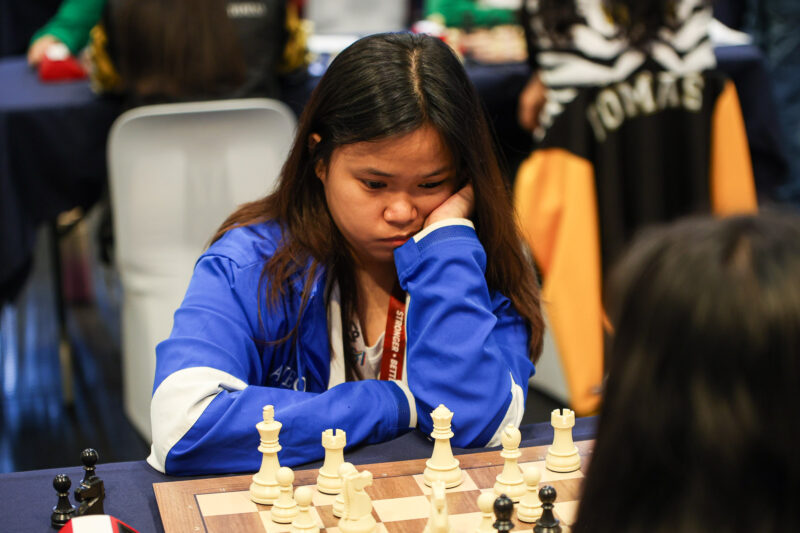Dek: Amid a world consumed by overproduction, a group of women remain resilient, intricately stitching pieces of fabric with nothing but their hands and a sewing machine.
AS SUNLIGHT streams into a small room at Saint Francis Xavier Parish’s activity center in Novaliches, the vibrant colors of the fabric-covered walls become prominent. This radiant glow mirrors the optimism and experiences of six women, each meticulously crafting quality pieces for their customers.
Inside this room holds stacks of old clothes and boxes of sewing materials, accompanied by the rhythmic hum of the machine. Beyond its walls, however, the erratic cycle of constant mass production disrupts this steady, deliberate process.
Threading the needle
Three of the five seamstresses—Ms. Ana, Ms. Lucina, and Ms. Priscilla—come from different backgrounds, yet they have banded together to learn the craft of sewing. Before joining the group, the three recall completing their Technical Education and Skills Development Authority courses but not being able to graduate due to the pandemic.
These circumstances prompted them to accept an invitation from Ms. Pen, the group’s coordinator, to join the church’s livelihood program that provided jobs for women affected by the pandemic. Now in their late 40s to mid-50s, they continue to meet new people, refine their craft, and advocate for the use of sustainable materials.
“‘EcoNanay’ tawag sa amin kasi nagtatahi kami ng used clothes (They call us ‘EcoNanays’ because we sew used clothes.)” Ms. Ana explains.
More often than not, the fabrics they use are sourced through their customers or the thrift stores around the area. At their customers’ requests, these used fabrics become bags, rags, and hats. Their business has garnered strong support from schools and organizations in Metro Manila that share their advocacies.
Stitching through the lines
Woven into these repurposed threads and textiles is the warmth of the EcoNanays. For them, the long hours spent at the sewing machine, rhythmically stepping on the foot pedal, is deeply gratifying. By the time they slip on their aprons each afternoon, their bodies are already awakened by the familiar course of their morning chores.
“Kapag trabaho, trabaho. Nare-relax kami. Kapag may problema, babalik ka kasi sa bahay, sasalubungin ka ulit ng problema [na iyon],” Ms. Pen jokes.
(Work is work. We feel relaxed. You go back home if there’s a problem. Problems will greet you there.)
To them, their sewing room becomes a sanctuary of artistry where they are free to express themselves. However, their day’s work does not always provide peace.
Ms. Ana notices that some clients expect a replica of their request while entrusting all design decisions to the seamstresses. She explains that, at times, clients only realize their preferences after the production is complete, resulting in demands to remake the product.
Despite such struggles, the EcoNanays still see the beauty of sewing. To them, the quality that comes with careful craft will always outweigh the quantity that is produced through fast fashion.
Ms. Ana points out that the seamstresses’ delicate touch on local and global fabric goods sets them apart from the cheap and low-quality imports that are steadily increasing in the Philippines. “Dinadaya nila. Hindi nakakabuti ‘yung inaangkat sa ibang bansa. Hindi nakakabuti kasi bumabagsak na ‘yung ekonomiya natin,” she stresses.
(They can be deceiving. It’s not always good to import from other countries. It does not benefit us because our economy is already dropping.)
As consumers opt for imported used clothes, local seamstresses struggle as they lose clients and succumb to dwindling pay. Ms. Pen laments the injustice within the industry, where workers grapple with underpayment and the instability of contractualization.
“Talo pa rin mananahi ngayon. Titingnan mo ‘yung labor force, mas kumikita ‘yung may-ari, may puhunan… Hindi nila alam na tinulungan nila ‘yung mayaman, hindi ‘yung kapitbahay na mahirap,” she states.
(It’s still a losing game for seamstresses. If you look at the labor force, owners benefit the most. They don’t know that they’re just helping the rich and not their neighbors in need.)
Cut from the same cloth
Despite the woes brought by the economy and the pandemic, sewing continues to breathe new life into these women.
The woman who has stitched her way through life since high school, the one who rarely left home except for trips to the market, the one who had never touched a sewing machine, and the one who never imagined herself as a leader—today, they are the EcoNanays.
As seamstresses struggle with the demands of their daily lives, the hurdles of climbing up the economy remain persistent. Fast fashion and consumer inclination continue to hinder the humble yet prolific sewing industry from flourishing in the Philippines.
“Sana hindi lang pananahi ‘yung matututuhan nila… Sana matanggap din nila [‘yung katumbas ng] hirap nila, talento nila,” Ms. Pen prays.
(I hope sewing is not the only thing they learn. I also want to see them earning rightfully for their hard work and talent.)
While the EcoNanays recognize that sewing gives them only enough to survive, they still choose to stay because, in it, they find solace. They continue to dream of a world where one day, the relentless tide of importation and overproduction will cease to undermine the personal touch of their timeworn hands.

